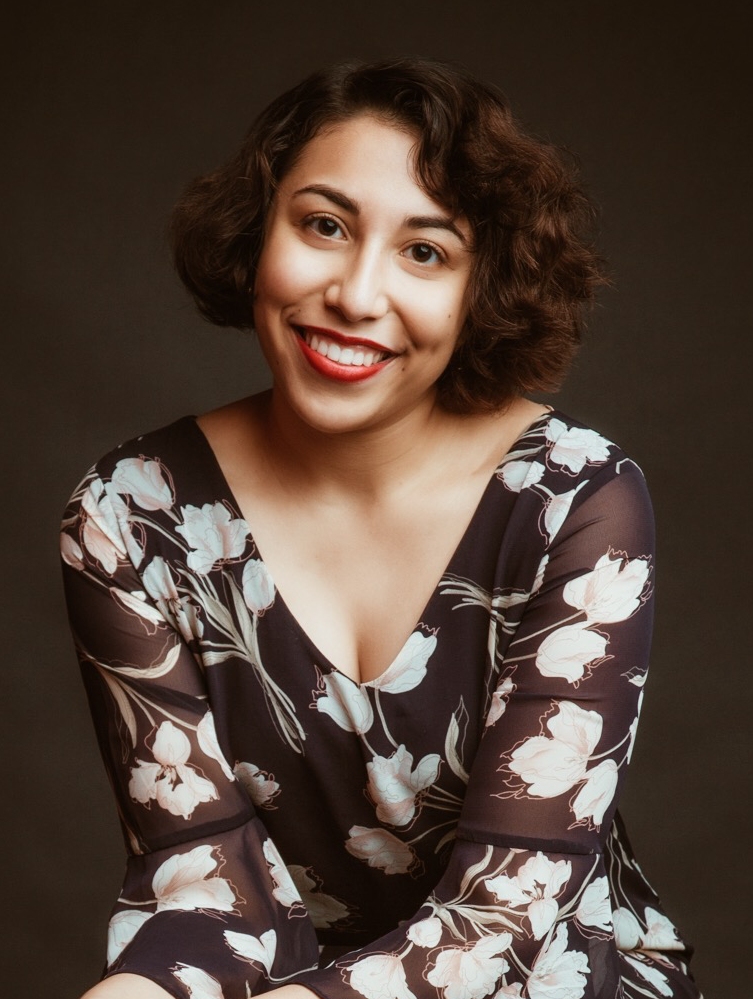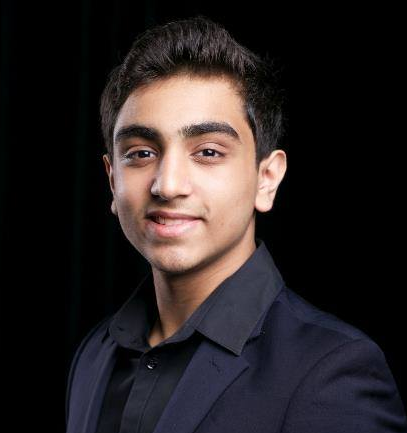The annual Cultural Convention, where over 200 students traveled across Asia to exchange ideas about their artistic endeavors, took place this March. Get to know five talented individuals across the International Association of Southeast Asian Schools who represented their schools during the Convention.
 Abbi Yuniarto
Abbi Yuniarto
Stage Technician, JIS
Two years ago, a section of Jakarta International School’s dance performance involved the dancers flinging paint around the entire stage, so the technology team was tasked with finding a way to make it work. Eventually, to solve the issue of paint getting on the floor, the team constructed a tarp that was a stunning 100 kilograms heavy.
The trouble arrived when the team was due to move that tarp over 3,000 kilometers, from Jakarta to Taipei, for the Cultural Convention. “We had to cut up a hundred kilos of tarp, carry it to Taipei, then reassemble it there. All of the JIS delegates had to pitch in.” says tech delegate Abbi Yuniarto.
This is not uncommon for the team, which has spent the past four years going to extreme lengths to “make it work” behind the scenes. Inexperience was also a challenge for Abbi and the tech team, who often must make do by learning new techniques as they go without formal instruction to help them. “When I became a sophomore, the old tech crew all graduated, so we sort of had to learn to do everything from scratch,” he says. “Relearn the equipment, get used to the stress.” Their team decimated, the JIS team built an entirely new base of skills quickly. “We were sort of on our own, but we did it, and the show wasn’t horrible, so I guess we made it.”
As Abbi reaches the end of his senior year and begins to train the new generation of tech delegates, he looks back fondly on all the triumphs and trips which made up his experience as part of the team. “One dude summed it up as ‘we had so many bants together,’” Abbi says. He stops himself for a moment. “Not sure if you can include that in the Blue & Gold, but I concur.”
 Maya Gan
Maya Gan
Dancer, International School of Kuala Lumpur
Dance has always been a source of stability for Maya Gan, who has been dancing since she was four years old. “I think back then it was just something all the girls did and I kind of just wanted to jump on the bandwagon,” she says. “But that changed when I first performed on a stage.”
The burst of energy she experienced when she performed her first routine in front of an audience pushed her to expand her horizons. “I had this super colorful dress with my hair teased up,” she says. “And as cheesy as it sounds, I think that’s what really kept me going in dance.”
She kept dancing throughout her elementary and middle school years, becoming a star dancer in her school. But when she moved in her junior year of high school to ISKL, she was once again unmoored. Dance became her rock yet again when she joined the dance team, enabling her to meet other students who shared her passion.
Through the dance program, she met new people and gained access to experiences she would not have otherwise. “When you’re the new kid, seniors are so daunting, but over time I got know them through dance and now I am so close to them,” she says.
This year, Maya and her fellow team members have continued in previous traditions for their choreographies, relying equally on emotion and technique to build their piece. A highlight for her this year is the opening of their piece. “It’s so powerful compared to anything I’ve done before,” she says. The team worked over the course of the year to perfect a fast-paced and precise choreography. “You have to make eight different dancers look exactly the same even in small things like the angles of legs when we had to kick,” says Maya.
She hopes to continue her work for dance in the future. “As of now, I will not be going taking dance as a major in college but I definitely want to join a dance team or dance classes in college,” she says. “I don’t ever want to lose it, so even though it may not be my career path, it is something I know that will be in my future in some shape or form.”
 Priyanka Ayer
Priyanka Ayer
Speaker, International School of Kuala Lumpur
“I’m not sure if I can pinpoint a particular piece that convinced me I needed to write,” says Original Oratory delegate Priyanka Ayer. “In all honesty, every book I’ve ever read has cemented that fact in my mind—I need to write, the same way some people need to paint or mentor or play basketball. it’s just one of those things i know in my bones, sure as breath.”
As part of her school’s OO team, Priyanka spent months preparing a speech for recital at the Cultural Convention at Singapore American School. Her love of literature from early on in her life encouraged her to join OO for her last year of her high school career, an event which cemented her identity as a writer. Writing on the topic of softness as savagery, Priyanka refuted the pervasive societal norm that sensitivity and fierceness are mutually exclusive. “I think for me it’s another one of those things where this topic just means everything to me, and it has for a really long time,” she says. “As someone who is both desperately sensitive and incredibly ambitious, it’s hard to balance this pervasive notion.’”
While these individual speaking events are not often known as team sports, Priyanka considers the help she received from her fellow team members as essential to the speech’s development. “The speech changed a lot over the course of the year—my teammates were phenomenal when it came to knowing how to push me hard, get at the heart of the vulnerability of the speech rather than hide behind poetics, as tends to be my default defense mechanism,” she says. “Without them it absolutely would not be as vibrant or nuanced as I hope it is.”
 Shubh Mahtani
Shubh Mahtani
Actor, International School Manila
As an elementary school student, Shubh Mahtani took his first drama class out of a sense of obligation. “Back then we had the choice to either take art or drama, and I wasn’t good at drawing,” he says. “But I loved making up stories when I was younger, so I decided to try it.”
He soon found his strength in acting, especially comedic characters. While he enjoys playing characters with diverging personalities, being able to reveal his true personality feels like coming home. “I was a funny character at IASAS this year,” says Shubh. In the original screenplay that ISM created this year for the Cultural Convention, he played a character that initially rejects his Indian culture and personality, but slowly accepts it over the course of the play. “I was happy to bring a bit of myself out onstage,” he says.
High school drama has exposed him to other disciplines as well. “We made this song and all had so much fun singing it, it was loads of fun because we were all enjoying and we really got to bond with each other,” he says. “We also add in the tune of that song into our piece!’
Over the course of his high school experience, Shubh has spent considerable time working on his skills in various areas in drama. “I’m a senior, so I’ve already taken theater for my whole high school career,” Shubh says. His bond to the theater students has also helped him. “The members of the team have become some of my best friends.”
 Cheryl Loke
Cheryl Loke
Artist, International School of Bangkok
At the Cultural Convention this year, Cheryl Loke’s exhibit was met with gasps and stares. Her work, “What’s for Dinner?,” depicted a sculpture of an animal’s bloodied carcass torn apart and placed on a plate. “Some people expressed pure disgust of the sculpture,” says Cheryl. “I had some people say ‘why would you make that?’”
As a vegetarian for several years, Cheryl was inspired by the cruel and inhumane treatment that animals faced before reaching the dining table. “I believe those negative reactions to my artwork just proves my point that if we are able to see the full animal and not in a packaged in a meat aisle, then more people wouldn’t eat it.”
Cheryl herself had been a meat-eater before she realized the inhumane conditions that animals were subjected to in the slaughterhouse. She initially considered becoming vegetarian at her friend’s encouragement, a little bit reluctantly. However, after watching a documentary on the lives of animals, she became fervently opposed to meat-eating. “I had never seen what goes into making meat, I thought of it as just food on a plate instead of a living life. And I feel once people really realize that there are real animals behind their food, it can change their perspective,” Cheryl says.
For her, art is a way for her to express her feelings on social justice issues and to start a conversation. “Art gives an open-ended, new perspective on topics which can help shed light on topics that people may find taboo,” says Cheryl. “Over time, I’ve developed a dark humor, and an art style which mostly deals with controversial topics.”
As such, medium with which Cheryl creates art often changes, adapting to what she feels best develops the message. “With the pig sculpture I displayed in CC, I felt that people needed visually to see the reality of the animal agriculture industry and it being a sculpture makes it seem more tangible and realistic,” she says.
The process of the sculpture itself was less exciting than her conception of the topic and her advocacy for the cause. “It was really tedious. I spent around 3 weeks making it and at some points I felt like giving up,” says Cheryl. “But that’s just a part of the art process. And the reaction this piece received made everything worth it.


![Sofia Valadao [Erin Wu/The Blue&Gold]
Erin Wu [Annabelle Hsu/The Blue&Gold]](https://blueandgoldonline.org/wp-content/uploads/2025/05/erin-sofia-pic.png)
![Dr. Simeondis, Mr. Anderson. [Annabelle Hsu/The Blue&Gold]](https://blueandgoldonline.org/wp-content/uploads/2025/05/teachers-1200x675.jpg)
![[PHOTO COURTESY OF UNCULTURED, JUNIPER AND CO.]](https://blueandgoldonline.org/wp-content/uploads/2025/05/student-businesses-1200x675.png)
![Photo of the girl's varsity badminton team [PHOTO COURTESY OF TAS ATHLETICS]](https://blueandgoldonline.org/wp-content/uploads/2025/05/BadmintonTeam-04839-1200x675.jpg)
![The Institute for Speech and Debate, now based all across the east coast of the US. [PHOTO COURTESY OF MR. WILLIAMS]
Mr. Morris' various ceramic artwork. [PHOTO COURTESY OF MR. MORRIS]](https://blueandgoldonline.org/wp-content/uploads/2025/05/Untitled-design-1-1200x918.png)
![Mr. Castro celebrates at the finish line. [PHOTO COURTESY OF MR. CASTRO]](https://blueandgoldonline.org/wp-content/uploads/2025/04/20240513_092650124_iOS-e1745300337344-1200x1116.jpeg)